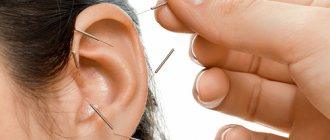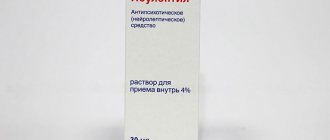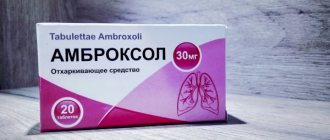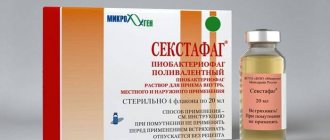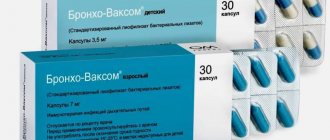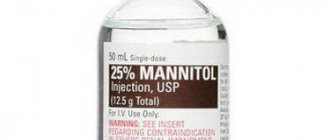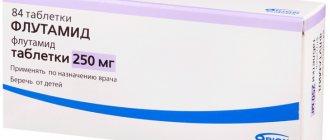L-carnitine (levocarnitine, carnitine) is a bioactive substance similar in structure to B vitamins. Its chemical composition is an amino acid. Endogenous synthesis of levocarnitine occurs in the liver and kidneys with the participation of lysine and the donor of methyl groups - methionine. The synthesis of this substance is impossible without the participation of vitamins C, group B, folic acid and iron.
The task of carnitine is to participate in fat metabolism and saturate the body with energy. As a result of chemical reactions, the compound acyl-CoA, known to many, is formed from fatty acids and coenzyme A. By itself, this molecule cannot penetrate the mitochondria. And then an amazing thing happens. Carnitine replaces coenzyme A in the molecule and turns into acyl-carnitine.
Unrecognized, it freely passes through the double membrane of the cell, which also contains coenzyme-A, and penetrates into the mitochondria. Inside the cell, the acyl-CoA molecule is resynthesized on its own. There, a further process of its oxidation occurs to the final metabolic products - water and carbon dioxide. In this case, a large amount of energy (ATP molecules) is released. What about L-carnitine? He comes back freely.
Release form and composition
For the convenience of consumers, levocarnitine is available both in the form of tablets and capsules, and in the form of syrup.
L-carnitine syrup is packaged in dark 100 ml bottles. One package of syrup contains up to 10 g of levocarnitine. Additional ingredients include fructose.
The tablets are packaged in quantities of 10 pieces in contour cells. They, in turn, are located in cardboard packs of 5, 3, 4 or 6 pieces. One tablet contains 100 or 500 mg of levocarnitine and 30 mg of ascorbic acid.
L-carnitine capsules are packaged in polymer bottles of 150 or 60 pieces. One capsule contains 250 or 500 mg of active ingredient.
Interaction with other drugs
The effectiveness of 30% levocarnitine is enhanced when taken simultaneously with thioctacids. Anabolic drugs increase activity. When combining a 30% drug with corticosteroids, its accumulation in tissues increases and the rate of absorption also increases.
When taking levocarnitine, it is important to consider its compatibility with other medications.
Indications for use of L-carnitine
According to the instructions for L-carnitine, the drug should be taken for underweight, anorexia, and delayed growth and weight in children. For adults, L-carnitine is recommended as an anabolic agent for anorexia nervosa, physical exhaustion, after surgery, after illness, and for chronic ischemic heart disease.
As an element of complex therapy, levocarnitine is used to treat diseases for which the use of non-steroidal drugs is recommended.
Elderly people should take L-carnitine to prevent changes in the brain caused by aging, as well as to improve memory, concentration and attention.
According to some data, L-carnitine is effective in focal scleroderma.
In addition, the drug is widely used as a means of increasing endurance during sports competitions and physical activity. The use of L-carnitine promotes more effective muscle mass gain.
In some cases, the drug is recommended for vegetarians who do not receive enough levocarnitine from food.
Precautionary measures
The effectiveness of 30 percent levocarnitine depends on compliance with the instructions. If the dosage and dosage regimen are violated, the drug can cause harm to the body. It is also necessary to take into account that when treating with this drug it is necessary to adhere to the diet. Levocarnitine increases endurance, but proper nutrition remains an equally important factor for recovery. It is recommended to work out a balanced diet with your doctor.
For children who play sports, treatment tactics change. The course is compiled depending on the individual characteristics of the body. More often, insufficient concentrations of L-carnitine are observed in vegetarians. This provokes the progression of various diseases. Therefore, adherents of veganism need to take care in advance about ways to replenish L-carnitine.
Levocarnitine 30 percent should be taken only after consultation with a medical specialist.
Important! For treatment, it is recommended to select certified medications that have passed quality control.
Directions for use and dosage of L-carnitine
L-carnitine syrup is intended for oral administration and is taken regardless of meal time. It is not recommended to dilute the syrup; if necessary, it is better to drink it with water. The dosage, as well as the duration of administration, should be determined by the attending physician. Most often, adults are prescribed three doses of L-carnitine, 5 ml each.
Persons exposed to high-intensity physical activity are prescribed a single dose of levocarnitine in the amount of 15 ml. The drug should be taken immediately before training. The course of treatment should be at least 4-6 weeks. Subsequently, repetition of the course is allowed.
For newborns, as well as children under 12 months, a single dose of syrup is about 8-20 drops. Children aged 12 months to 6 years are recommended to take 20 to 28 drops at a time. A single dose for children 6-12 years old is 2.5 ml of syrup. The frequency of administration is 2 or 3 times a day, treatment should last at least 30 days. The course is repeated after a few weeks, if necessary.
L-carnitine tablets must be swallowed whole, without chewing, with water. The dosage is prescribed by the doctor in accordance with the indications and general condition of the patient. The recommended dosage for adults, as indicated in the instructions for L-carnitine, is from 250 to 500 mg 2 or 3 times a day. A single dose for athletes is 500-1500 mg of the product. The drug is taken in courses, but no more than six months continuously.
L-carnitine capsules are also swallowed completely, without chewing or breaking into pieces. Recommended dosages are the same as for tablets.
The benefits and harms of L-carnitine for children
Levocarnitine is used in medicine to treat muscle weakness and stroke. For children, it is more often prescribed when there is a delay in physical development. This substance has the following beneficial properties:
- has a positive effect on brain cells and prevents their aging process;
- accelerates the regeneration process;
- has a positive effect on memory;
- increases children's performance;
- increases oxygen saturation of cells;
- reduces the concentration of so-called bad cholesterol;
- helps burn fat.
Doctors have established a recommended dose of 0.5-1.5 mg of 30 percent levocarnitine daily, similar recommendations for athletes. If you exceed this dosage, negative effects of the substance may occur. You should also eat a balanced diet. Harm from 30% levocarnitine is also possible if it is taken by children if there are contraindications. Overdose is extremely rare and causes the following complications:
- Diarrhea.
- Increased heart rate.
- Increased concentration of ammonia in the body of children.
- Involuntary muscle contractions.
- Attacks of nausea, in severe cases vomiting.
Levocarnitine analogues
There are not many substitutes for the drug. Carnitine analogues include:
- Levocarnil. The basis is carnitine. Improves health in different directions. After opening the bottle, take no more than 2 months.
- Elkar. Corrects metabolic processes. An L-carnitine analogue is administered intravenously. Rapid administration may cause pain.
- Polyprotene. The drug is adapted for patients with chronic kidney disease. The nutritional mixture stimulates intestinal motility and normalizes the metabolism of fats, proteins, and carbohydrates.
- Lecarnita. High doses of L-carnitine analogue provoke diarrhea. With prolonged use, loosening of the stool is also possible.
- Carnivit. Reduces symptoms of mental and physical stress. May cause nausea, vomiting, epigastric pain and seizures.
- Cartan. It is well tolerated, but more often leads to moderate gastrointestinal disorders.
Your doctor will help you choose a carnitine substitute. You cannot buy an analogue on your own.
Contraindications and side effects
Levocarnitine is contraindicated if you are allergic to one of the components of the drug, as well as during pregnancy and the lactation period. Doctors identify the following side effects when using the medicine:
- Allergy. It is expressed in rashes on the skin, a feeling of itching and swelling.
- Weakness of muscle tissue. It mainly develops in people with uremia.
- Painful sensations in the area of blood vessels with intravenous administration of 30% levocarnitine.
Decortin
GCS is a dehydrated analogue of hydrocortisone, inhibits the release of interleukin1, interleukin2, interferon gamma from lymphocytes and macrophages. It has anti-inflammatory, antiallergic, desensitizing, antishock, antitoxic and immunosuppressive effects.
Suppresses the release of ACTH and beta-lipotropin by the pituitary gland, but does not reduce the concentration of circulating beta-endorphin. Inhibits the secretion of TSH and FSH.
Increases the excitability of the central nervous system, reduces the number of lymphocytes and eosinophils, increases the number of red blood cells (stimulates the production of erythropoietins).
Interacts with specific cytoplasmic receptors and forms a complex that penetrates the cell nucleus and stimulates the synthesis of mRNA; the latter induces the formation of proteins, incl. lipocortin, mediating cellular effects. Lipocortin inhibits phospholipase A2, suppresses the release of arachidonic acid and suppresses the synthesis of endoperoxides, Pg, leukotrienes, which contribute to inflammation, allergies, etc.
Protein metabolism: reduces the amount of protein in plasma (due to globulins) with an increase in the albumin/globulin ratio, increases the synthesis of albumins in the liver and kidneys; enhances protein catabolism in muscle tissue.
Lipid metabolism: increases the synthesis of higher fatty acids and TG, redistributes fat (fat accumulation mainly in the shoulder girdle, face, abdomen), leads to the development of hypercholesterolemia.
Carbohydrate metabolism: increases the absorption of carbohydrates from the gastrointestinal tract; increases the activity of glucose-6-phosphatase, leading to an increase in the flow of glucose from the liver into the blood; increases the activity of phosphoenolpyruvate carboxylase and the synthesis of aminotransferases, leading to the activation of gluconeogenesis.
Water-electrolyte metabolism: retains Na+ and water in the body, stimulates the excretion of K+ (MCS activity), reduces the absorption of Ca2+ from the gastrointestinal tract, “washes out” Ca2+ from the bones, increases the excretion of Ca2+ by the kidneys.
The anti-inflammatory effect is associated with inhibition of the release of inflammatory mediators by eosinophils; inducing the formation of lipocortin and reducing the number of mast cells that produce hyaluronic acid; with a decrease in capillary permeability; stabilization of cell membranes and organelle membranes (especially lysosomal ones).
The antiallergic effect develops as a result of suppression of the synthesis and secretion of allergic mediators, inhibition of the release of histamine and other biologically active substances from sensitized mast cells and basophils, a decrease in the number of circulating basophils, suppression of the development of lymphoid and connective tissue, a decrease in the number of T- and B-lymphocytes, mast cells, reducing the sensitivity of effector cells to allergy mediators, inhibiting antibody formation, changing the body's immune response.
In COPD, the action is based mainly on inhibition of inflammatory processes, inhibition of development or prevention of swelling of the mucous membranes, inhibition of eosinophilic infiltration of the submucosal layer of the bronchial epithelium, deposition of circulating immune complexes in the bronchial mucosa, as well as inhibition of erosion and desquamation of the mucous membrane. Increases the sensitivity of beta-adrenergic receptors of small and medium-caliber bronchi to endogenous catecholamines and exogenous sympathomimetics, reduces the viscosity of mucus by inhibiting or reducing its production.
Antishock and antitoxic effects are associated with an increase in blood pressure (due to an increase in the concentration of circulating catecholamines and restoration of the sensitivity of adrenergic receptors to them, as well as vasoconstriction), a decrease in the permeability of the vascular wall, membrane protective properties, and activation of liver enzymes involved in the metabolism of endo- and xenobiotics.
The immunosuppressive effect is due to inhibition of the release of cytokines (interleukin1, interleukin2; interferon gamma) from lymphocytes and macrophages.
Suppresses the synthesis and secretion of ACTH and, secondarily, the synthesis of endogenous corticosteroids. Inhibits connective tissue reactions during the inflammatory process and reduces the possibility of scar tissue formation.

